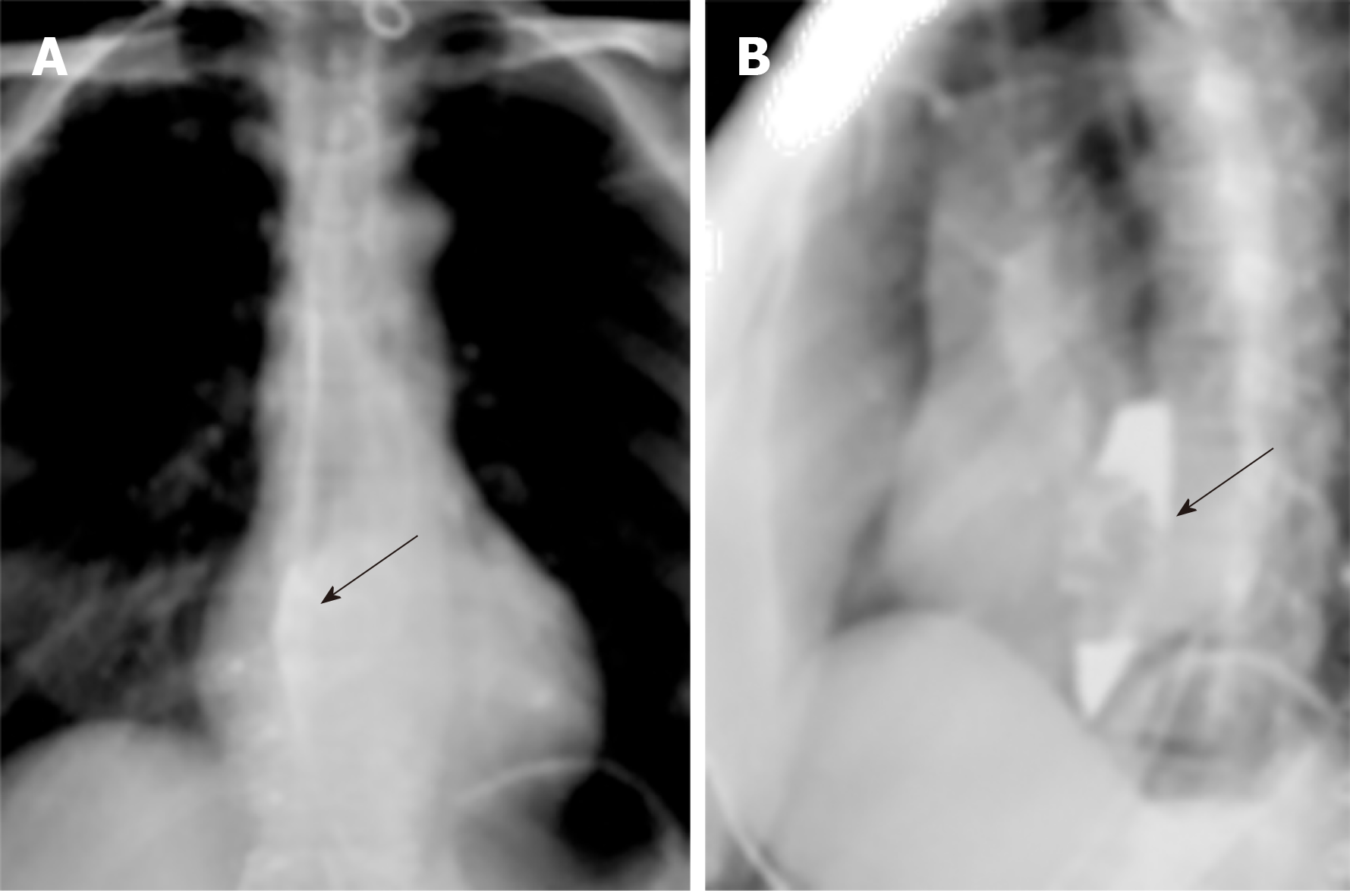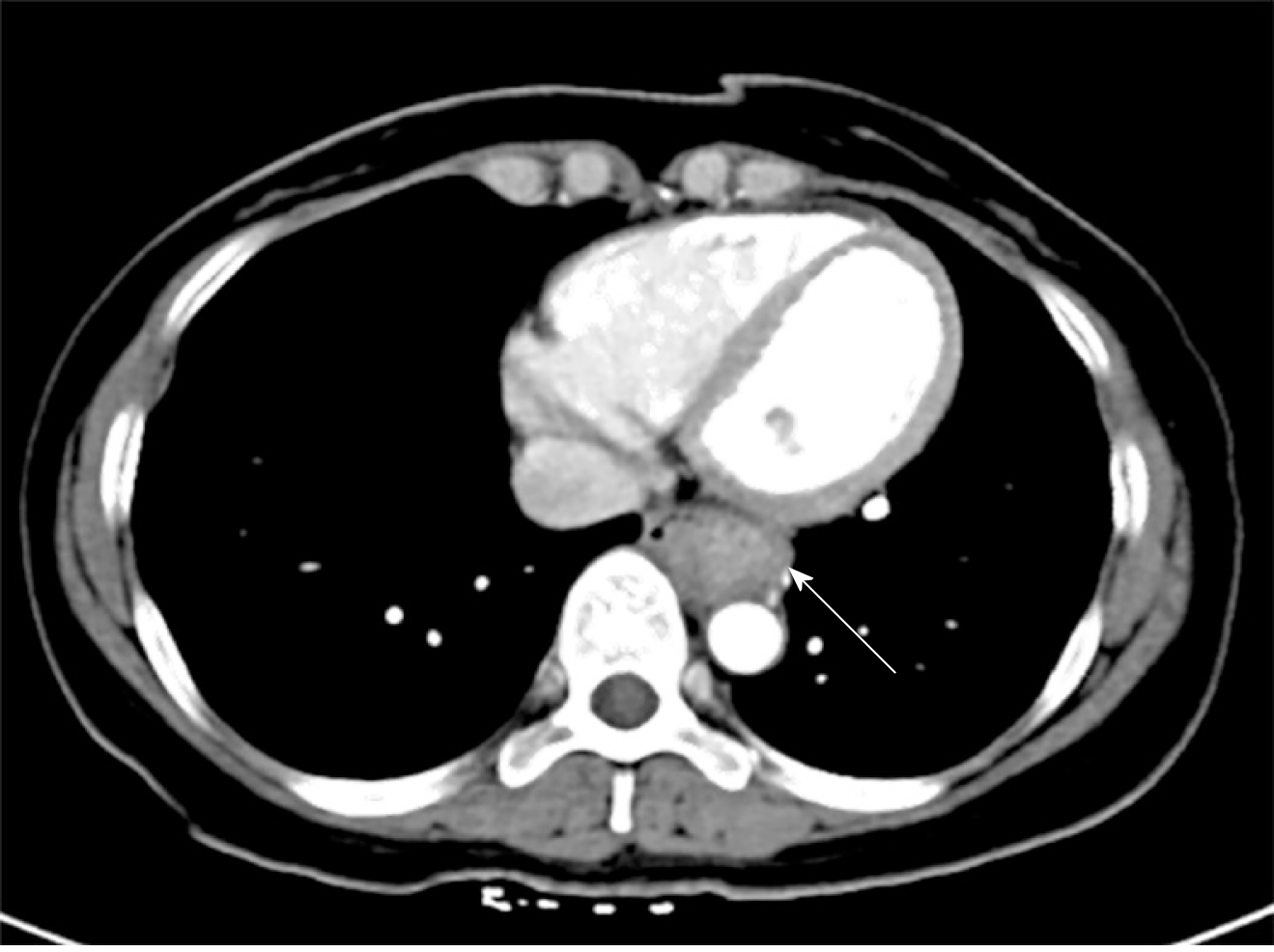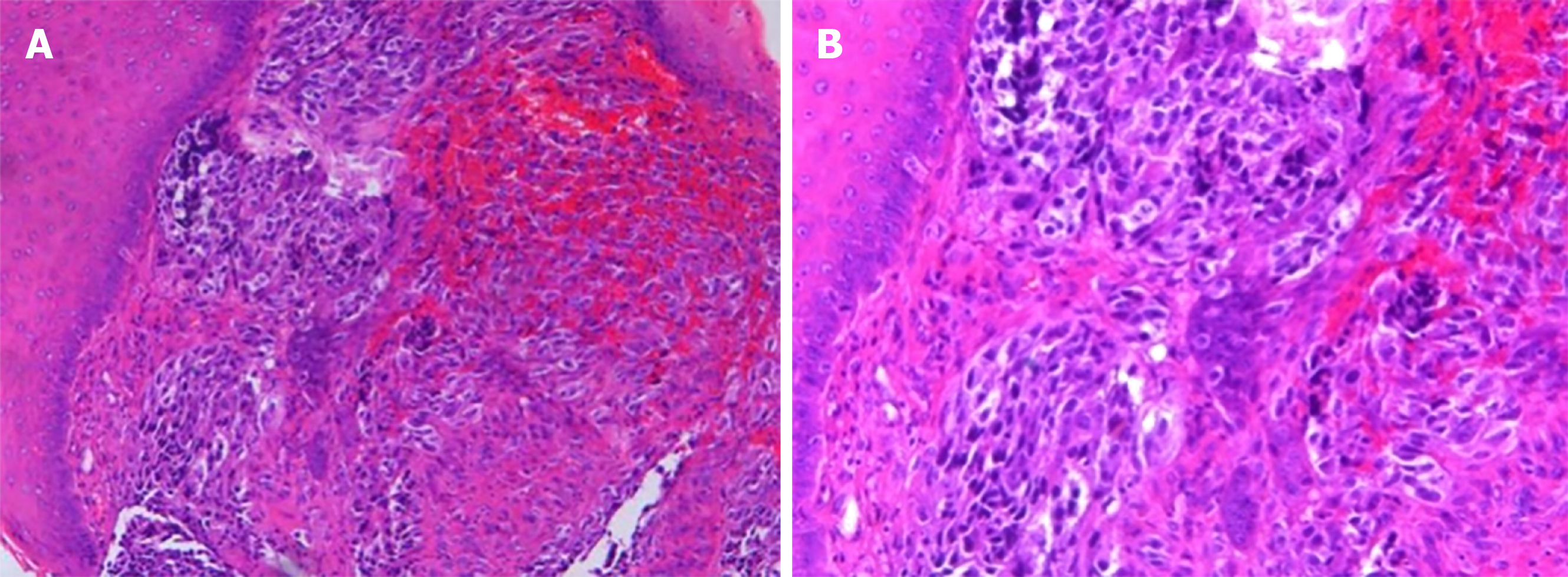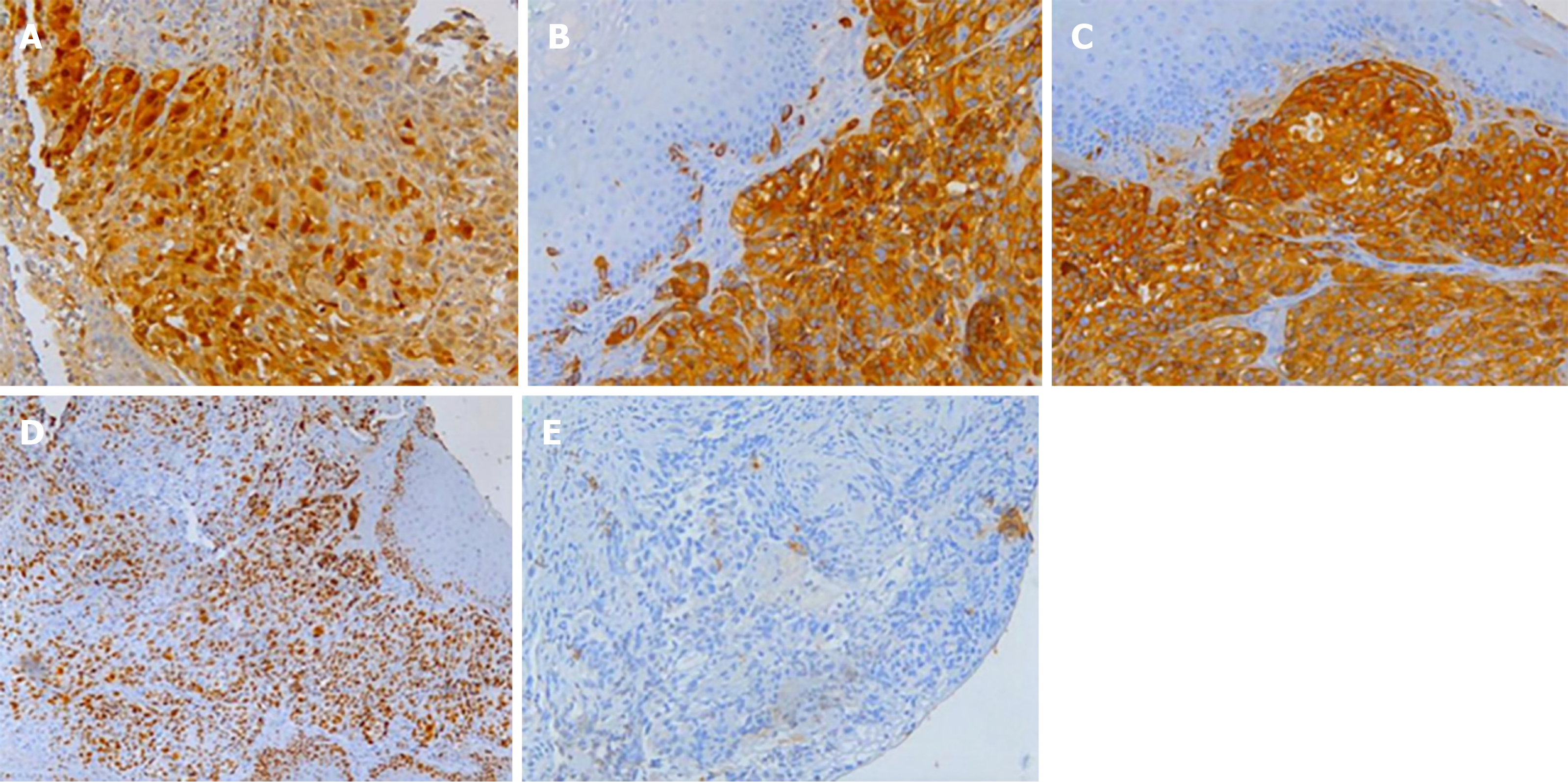Copyright
©The Author(s) 2019.
World J Clin Cases. Oct 6, 2019; 7(19): 3160-3167
Published online Oct 6, 2019. doi: 10.12998/wjcc.v7.i19.3160
Published online Oct 6, 2019. doi: 10.12998/wjcc.v7.i19.3160
Figure 1 Upper gastrointestinal radiography.
A: Mucosa film, with a polypoid intraluminal mass (arrow) present in the lower esophagus; B: Full-filling film, with a polypoid filling defect (arrow), without obstruction, is shown.
Figure 2 Upper gastrointestinal endoscopy.
A nonpigmented polypoid mass protruded into the esophageal lumen, located 30-35 cm from the incisors. The mass extended along the esophageal longitudinal axis.
Figure 3 Imaging examinations.
A: Computed tomography image showing the bone metastasis, with a nodular and osteogenic bone destruction area (arrow) present in the left iliac bone; B: Single-photon emission computed tomography image showing a slightly hypermetabolic site (arrow) in the left iliac bone; C: Single-photon emission computed tomography-computed tomography fusion image showing a hypermetabolic area, with bone destruction (arrow).
Figure 4 Thoracic contrast-enhanced computed tomography.
An enhancing mass (arrow) was present in the lower esophagus.
Figure 5 Histopathology (hematoxylin-eosin staining).
A: The tumor cells are shown to have formed nests, without melanin granules; B: Polymorphic tumor cells with atypical and hyperchromatic nuclei are shown.
Figure 6 Immunohistochemical staining.
The biopsy stained positive for S100 (A), HMB45 (B), melan-A (C), and Ki67 (D) but was negative for CK (E).
- Citation: Zhang RX, Li YY, Liu CJ, Wang WN, Cao Y, Bai YH, Zhang TJ. Advanced primary amelanotic malignant melanoma of the esophagus: A case report. World J Clin Cases 2019; 7(19): 3160-3167
- URL: https://www.wjgnet.com/2307-8960/full/v7/i19/3160.htm
- DOI: https://dx.doi.org/10.12998/wjcc.v7.i19.3160














